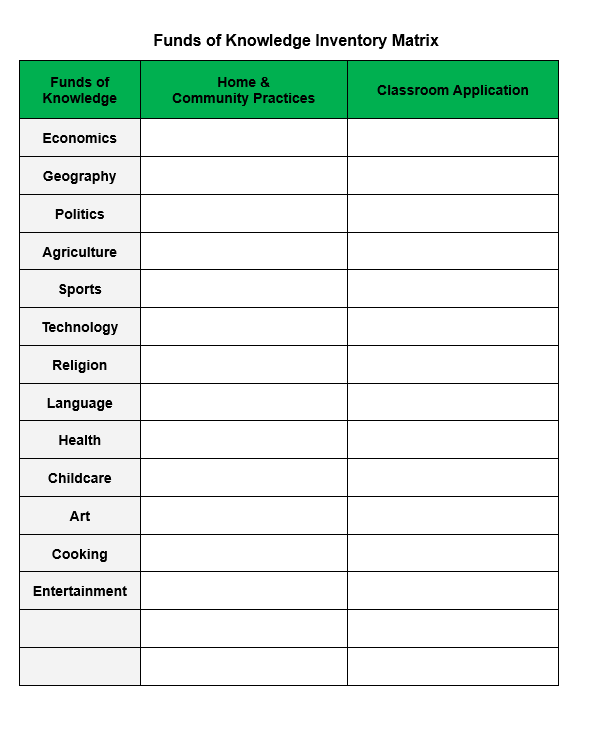
This toolkit offers some historical perspective on the uses of Funds of Knowledge in education, and provides a Funds of Knowledge Inventory Matrix and other tools for teachers to use.
“A student’s funds of knowledge can be described as: academic and personal background knowledge, accumulated life experiences, skills and knowledge used to navigate everyday social contexts, and world views structured by broader historically and politically influenced social forces…
There are many ways for educators to identify their students’ funds of knowledge. Many teachers apply strategies that can be done in class that involve having the students write essays about their backgrounds, do presentations about their interests, or create projects that represent their family heritage. Those types of assignments are very meaningful and help teachers learn a lot about their students. That said, much more can be learned about students by engaging with them and their families outside of the classroom. By visiting with families during home or community visits, teachers can gain a much wider understanding of their students’ funds of knowledge. One strategy that can help teachers connect their students’ funds of knowledge to classroom content is to take note of specific experiences their students have had and/or the different home or community practices in which their students are involved. Once particular practices and experiences are noted (e.g., having immigrated from another country), teachers can categorize them in terms of funds of knowledge categories (e.g., geography and/or politics). Once teachers have this information recorded, they can brainstorm potential classroom applications (e.g., designing a social studies unit around immigration policies, or a math lesson around immigration demographic data).” – Washington’s Office of the Superintendent of Public Instruction, Funds of Knowledge Toolkit